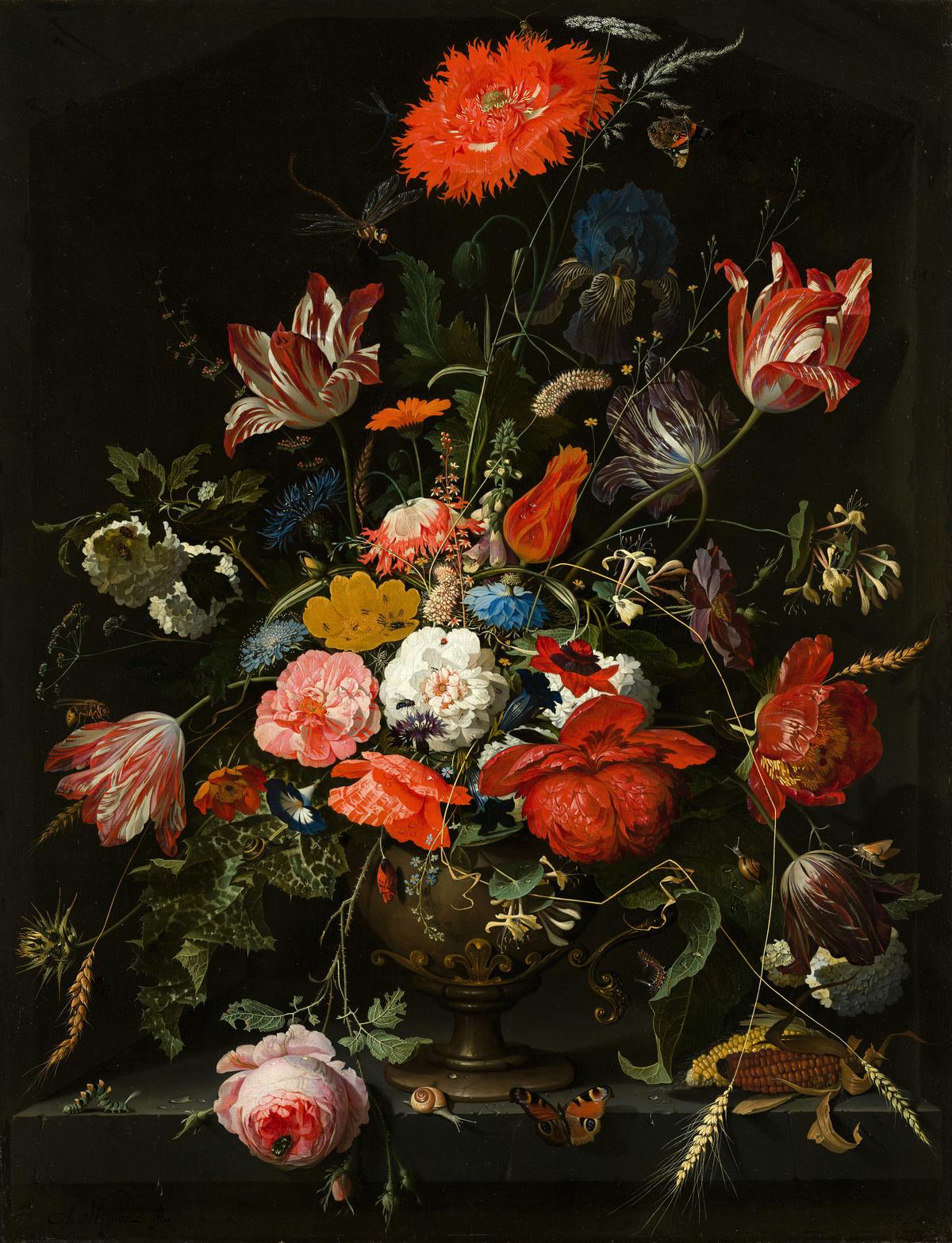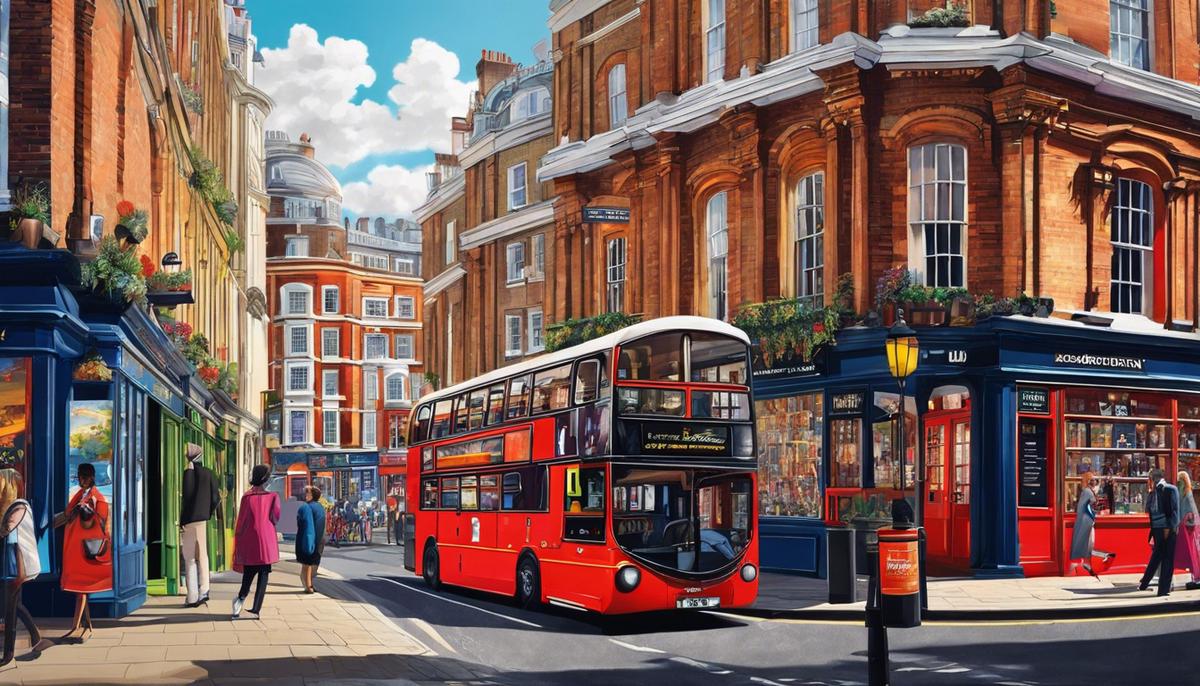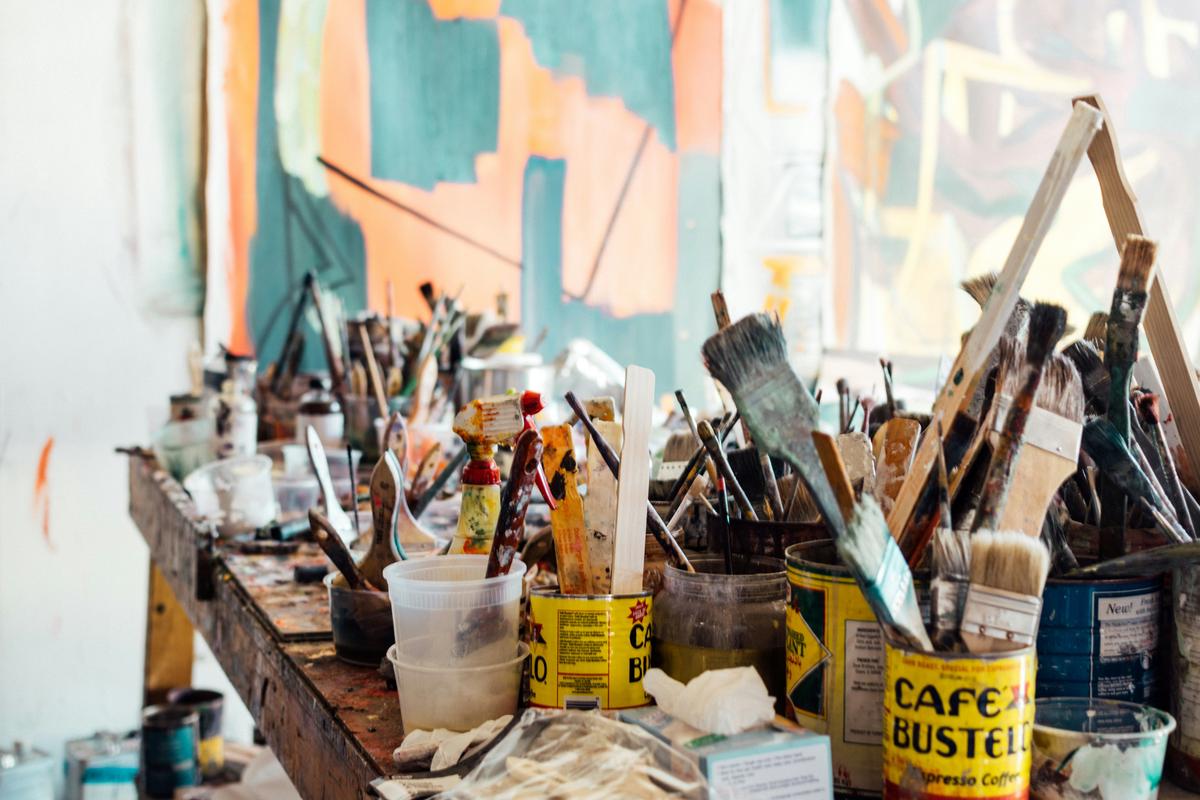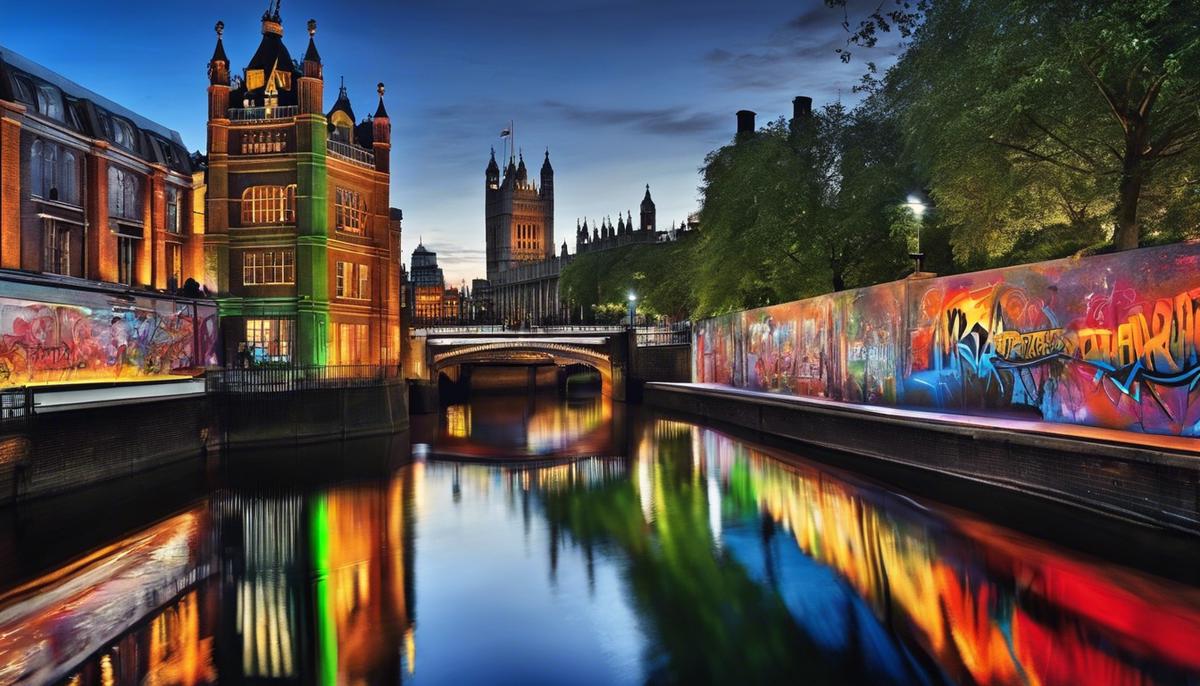London, a city steeped in history and ever-evolving modernity, presents a kaleidoscope of artistic endeavors that capture the imaginations of art connoisseurs and novices alike. At the heart of its cultural landscape lie iconic galleries like the venerable National Gallery, the avant-garde Tate Modern, and the scholarly British Museum – bastions of artistic expression that house centuries of creative achievement. They stand as sentinels of tradition, yet continuously push the envelope, fostering a unique conversation between the classical and the contemporary. Further afield, the burgeoning growth of innovative spaces such as the White Cube and Victoria Miro heralds a renaissance of artistic thought, challenging the status quo and nurturing the nascent voices of the art world.
Iconic Galleries and Their Exhibitions
London’s Iconic Galleries: The Ever-Changing Canvases of the Art World
In the heart of London, a bustling, ever-evolving art scene thrives, shaped by the historic walls that have seen centuries of creative genius. These aren’t mere walls. They’re storytellers, guardians of history, and inspirers of the new wave of artists.
Consider the Tate Modern, a powerhouse of contemporary expression. Once a humble power station, now a beacon of modernity. Its cavernous Turbine Hall transforms with each installation, pushing the boundaries of spatial perception. Imagine walking into a room filled with the warm glow of thousands of individual suns, an installation by Olafur Eliasson, challenging one’s own sensory experience.
Then there’s the National Gallery, a treasure trove of Western European paintings. Here, the masters of yesteryears cast a long shadow over the present, guiding brushstrokes and stirring dialogues across ages. One minute you’re gazing at Van Gogh’s ‘Sunflowers’, absorbing the vibrant hues and fervent textures that have delighted audiences for generations, and the next, you’re debating the impact of these historic works on today’s street art and digital creations.
Don’t overlook the smaller galleries, the unsung heroes of London’s art scene. They are the birthing rooms of avant-garde creativity. Galleries like the White Cube, tucked away in Bermondsey, serve as a launchpad for groundbreaking artists who dare to redefine the art world. The walls here are not just dividers; they are canvases, awaiting the next stroke of genius that will resonate through the streets of London.
The thematic exhibitions in these sacred spaces don’t just showcase art; they transform it. London’s galleries are a dialogue between the past, present, and future, converging in a symphony of visual spectacle. They challenge viewers to think, feel, and perhaps even create.
It’s this continuous reshaping, this fearless adaptation and evolution, that keeps the pulse of London’s art scene racing. The walls of London’s iconic galleries are alive, whispering secrets of old and sparking flames anew. They stand bold and unyielding, yet they change with every exhibition they house. They are London’s art guardians, a testament to the city’s unquenchable thirst for artistic expression. And as one steps out from these hallowed halls, the sheer magnitude of their influence is palpable, inviting the next wave of creative exploration.
In the end, London’s galleries are far more than rooms with art; they are the beating heart of the city’s cultural body – shaping, challenging and renewing the art scene with each passing moment.

Photo by europeana on Unsplash
Emerging Art Spaces
Beyond the towering grandeur of London’s staple art havens, the true heartbeat of innovation pulses elsewhere, thriving in the most unexpected nooks. Shoreditch’s streets, for instance, are alive with the raw, vivid language of graffiti – a visual feast where aerosol becomes the voice of the unsung genius. These urban canvases, fleeting yet fiercely present, are the proving grounds for street artists who will shape tomorrow’s galleries.
Venture south to Brixton, where a vibrant mélange of culture reflects in every art form imaginable. Here, pop-up exhibitions and ephemeral galleries offer a platform for artistic expressions as dynamic and diverse as the area itself. Passionate debates over the latest displays in these pop-up galleries are just as compelling and driving as the art on show.
Meanwhile, Peckham – once overlooked – now claims its crown as a contemporary artscape where grassroots gallerists are the vibrant lifeline of the scene. The acclaimed Peckham Platform is not just a gallery but an incubator for artists intensely committed to social engagement and community projects. These spaces reveal where art is not only viewed but vibrantly lived and discussed.
In the hallowed architecture of the Royal College of Art, the future of the arts is moulded and kneaded by intense creatives, each on their own Odyssey. Their annual graduate exhibitions are a treasure trove of avant-garde works – the public’s chance to witness the birth of phenomena.
Equally, Goldsmiths University in Lewisham, renowned for shaping mavericks and iconoclasts, serves as a forge where the wildest ideas are tempered into masterpieces. The Goldsmiths’ Centre for Contemporary Art, designed by Turner prize-winning Assemble, is a beacon for those seeking the next wave of artistic revolution.
Fast-tracking eastwards to Hackney Wick and one finds warehouses repurposed into hives of creativity, each studio a bustling node within the sprawling network of London’s ingenious talent base. Here, artists are not hemmed by tradition but rocket-propelled into an uncharted beyond.
Lest we forget, every summer, the heralded fields of Regents Park transform into a sculpture park with the Frieze Sculpture exhibition, marrying the opulence of nature with the daring of modern sculpture – a dialogue between the organic and the artificial that challenges and thrills.
So while colossal institutions continue to map the rich history of art with curated precision, the contemporary pulse of the art world beats assertively in London’s underbelly – in the ephemeral galleries, community hubs, and converted warehouses. Crucially, the city’s art scene is a living organism, one that breathes and evolves through these seemingly modest, yet profoundly influential, arenas. Pay attention, for this is where today’s creative heartbeat forecasts the rhythm of tomorrow’s art world.

Art Fairs and Events
Stepping into the dynamic world of London’s art fairs and events, one can’t help but feel the electric pulse of creativity that turns the city into a mecca for art aficionados and budding collectors. The canvas of the city is splashed with a spectrum of shows and gatherings that bring vibrancy and vision to the forefront.
Let’s dive into the effervescent Frieze London, a leviathan of an art fair that annually transforms Regent’s Park into a playground for the modern art lover. This colossal event, which takes place every October, showcases a thrilling mix of contemporary work, with galleries from over 160 of the world’s top artistic cities. It’s not just a fair; it’s an experience that envelops and energizes, making it a must for any collector worth their salt.
But Frieze isn’t the only hotspot on the art fair circuit. The Affordable Art Fair in Hampstead Heath and Battersea brings a fresh perspective to the scene. True to its name, it throws the doors wide open to those new to the collecting game, offering a plethora of pieces under £6,000. It’s a haven where emerging art is accessible, and the dream of owning a unique work is within grasp for enthusiasts of all stripes.
Meanwhile, the London Art Fair takes a more eclectic approach, reaching across the pond of time to link modern British art with contemporary works. Hosted annually at the Business Design Centre in Islington, the event pulls together an intriguing blend of established names and rising stars. It’s a hot ticket for collectors scouting the next big thing while paying homage to the masters of yesteryear.
Not to be overlooked, the Moniker Art Fair is the renegade of the group, embodying the rebellious spirit of London’s famed East End. Celebrating urban art, Moniker brings an edgy twist to the traditional fair format. Collectors with a taste for the street art zeitgeist will find themselves at home amongst the graffiti-laden walls and bold installations.
Beyond the annual fests, events such as the Pavilion of Art & Design in Berkeley Square present a slick, curated selection of design, decorative arts, and seminal works from across the globe. It’s a cosmopolitan cross-section of taste and tradition, with a finger firmly on the pulse of what’s trending in the world of sophisticated design.
As London’s art scene continues to swirl and swell, these art fairs and events serve as the humming hubs, channeling fresh talent and embracing the ever-shifting landscape of creativity. The city becomes a snapshot of the art world’s heartbeat, with innovative expressions and impressive collections galore. Whether an established collector or an eager enthusiast, London’s art fairs offer a gateway to the cutting edge, the classic, and the contemporary, transforming not just personal collections but the cultural fabric of the city itself.

Underground and Street Art Scene
The Living Canvas: London Streets as a Reflection of Underground Art
London is not just a city; it’s a sprawling gallery without walls, where the streets pulse with the very essence of creation. The paint on these city walls is as alive as the throng of pedestrians, each mural and graffiti tag telling a tale as vivid as any museum masterpiece. Skip the queue at the Tate Modern and take a stroll through the back alleys and underpasses; that’s where the raw spirit of London can truly be felt.
Brick Lane erupts in colour, its spray-painted stories eclipsing the gloom of overcast skies. Here, murals worn like badges of honour showcase the DNA of an ever-transformative culture. Artists, both known and the mysterious, claim corners and crevices, commandeering the concrete to speak their truths.
Camden Town exudes a gritty charm with its art-splattered streets, embodying the city’s youthful heartbeat. Galleries are fabulous, yes, but nothing compares to the surge of energy felt when stumbling upon a fresh piece in the wild. The ever-changing visual symphony illustrates London’s pulsating and diverse heartbeat, each line and letter a different rhythm in the great metropolis’ story.
Wander into Leake Street Tunnel, where the air is thick with the scent of spray paint. Here, the dimly lit cavern becomes a cathedral for urban artists to worship colour and form. A legal canvas for street magicians, it’s a place where imaginations run rampant and art is made without limits or fear of the eraser’s shadow.
London Bridge area whispers of an older, more secretive London with stencils and paste-ups flirting from corners, playing hide and seek with history. These images are the whispers of a cultural revolution, quietly claiming their right to exist beside centuries-old architecture.
Even the Southbank Skate Park, with its symphony of wheels on concrete, serves as a beacon of underground artistry. Tagged pillars and vibrant ramps mark the territory of the defiant and the fearless. The ever-present dance of skateboards and art becomes a duet wailing out freedom’s song.
London’s streets are a reminder that art is not simply found in the quiet corridors of highbrow galleries. It’s a living, breathing entity that strides alongside us, begging for an audience at every corner. The march of progress paints and repaints these walls, eternally etching stories into the city’s very skin. Each line of spray paint, each brushstroke, is a statement from the pulsating heart of London’s diverse and daring art community – a declaration that, here, in this city, art is for everyone, and the streets are always ready for their next masterpiece.

As the London art scene’s rich tapestry continues to expand, it remains a testament to the city’s enduring influence on the global stage. From the iconic institutions holding court in the hearts of art aficionados, to the pulsating street art that turns the urban landscape into a canvas for public discourse, London bridges the divide between past and present with a vitality that is unmatched. Its galleries, fairs, and myriad art manifestations don’t just reflect the dynamism of the art world; they propel it forward, underscoring the city’s role as a crucible of creativity that welcomes, shapes, and showcases the power of human expression in all its forms.





















